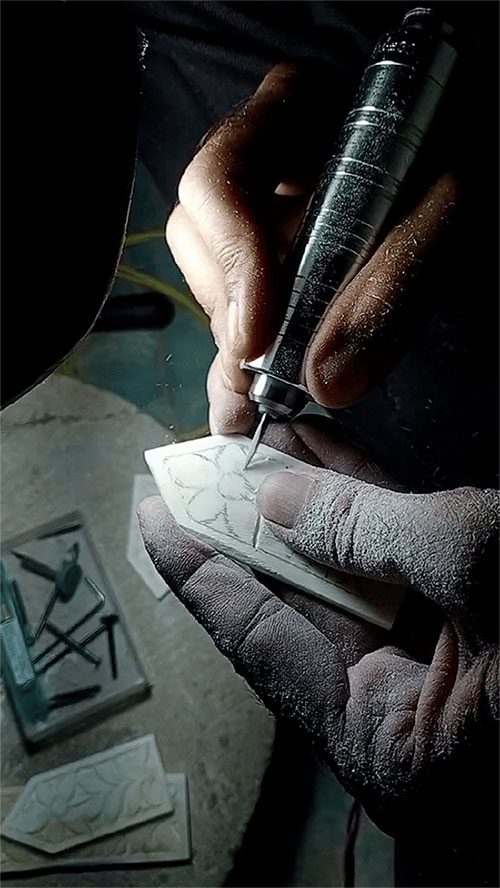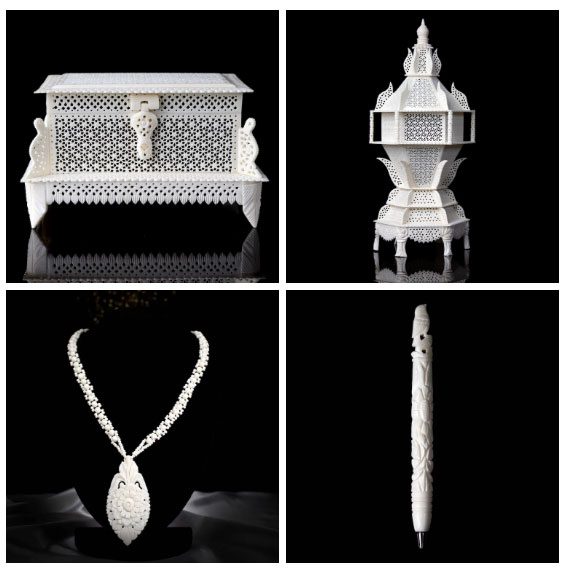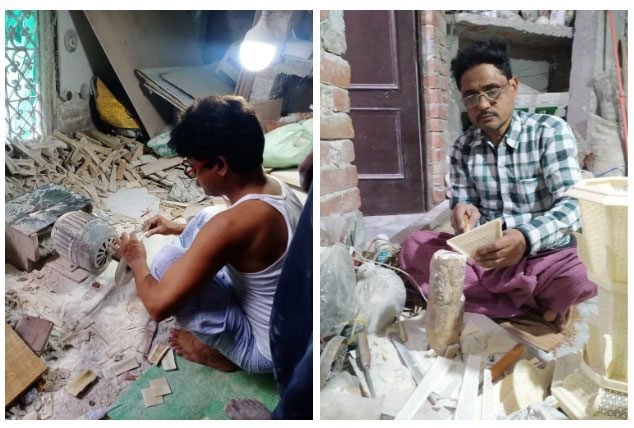Bone carving holds a uniquely significant position in Indian culture. During the Mughal dynasty, royal members used exquisite bone-carved works to adorn their palaces.
In the Lucknow district, the capital of Uttar Pradesh (India), a workshop is dedicated to preserving an ancient art tradition. Jalaluddeen Akhtar, the workshop owner, learned the skill of bone carving from his uncle in 1980 and has been creating beautiful artworks ever since. Now, his son, Aqueel, is also following in his father’s footsteps at one of the few remaining active carving workshops in the region.
However, with society becoming increasingly modernized, the bone carving profession faces numerous challenges. Although receiving government support, difficulties such as high electricity costs, a shortage of materials, and a shrinking market have made it hard for artisans to sustain this traditional craft.

An artisan carving on a piece of bone.
Currently, the Akhtar family is striving to prolong the traditional craft by participating in and disseminating knowledge about carving in government-sponsored workshops, while also collaborating with other professional artisans to continue creating beautiful bone carvings.
The Origins of Bone Carving Art
Since humans began hunting, they have used animal bones to craft tools. Due to their malleability and higher durability compared to wood, bones were soon employed in tool-making. Later, bone jewelry was also created and used as symbols of power and remembrance.
By the 17th century, as carving art began to flourish, artisans often used ivory or rhinoceros horn to showcase their skills. Exquisite carvings of jewelry, walking sticks, or storage trunks became increasingly popular in the Ganges Plain region, highly valued by rulers and kings who commissioned unique pieces. This significantly contributed to the promotion of bone carving art, even leading to an increase in elephant poaching for ivory in the area.

Various products made from bone such as chests, lamps, jewelry, pens,…
By the late 20th century, after the government imposed a ban on the ivory trade, this traditional craft faced significant threats.
While some individuals leveraged their carving skills to pivot to wood carving, others were determined to abandon the craft and move into different fields for survival.
For those who wished to uphold their family and ancestral traditions, they began using various animal bones, such as buffalo bone—an easily obtainable material from meat shops—as substitutes for older materials. Today, this remains the primary type of bone used by the Akhtar family to create stunning sculptures.
The Meticulous and Complex Working Process
When the bone pieces arrive at the artisan’s hands, they are cut down, cleaned, and then begin the carving process. The resulting products are incredibly diverse, ranging from lanterns, pens, and knives to earrings and necklaces. Any leftover bone scraps are sold to businesses for grinding into fertilizer.
The most complex work Aqueel has undertaken was restoring a lamp that is over 60 years old. The lamp stands about 1.5 meters tall and is adorned with countless intricate carvings measuring less than 1mm across its body. Even after several years, the restoration of the lamp is still incomplete.

Artisans working in the workshop.
Most bone carving details require artisans to perform entirely by hand. While machinery is used during the creation process, it is limited to basic stages, such as using saws to cut the bones or drills to create holes.
Many people have a negative view of the carving profession due to its historical association with ivory use; however, as society changes, artisans have also realized that harming animals for the sake of art is a mistake. Therefore, they are determined to adapt by using bones from other animals—typically livestock raised for meat—instead of those from rare species.
Aqueel shared in an interview with My Modern Met: “When people look at our work, we hope they see not just the intricate patterns on the surface but also the thousands of years of history behind it. I want them to recognize how far we have come from our original roots.”




















































